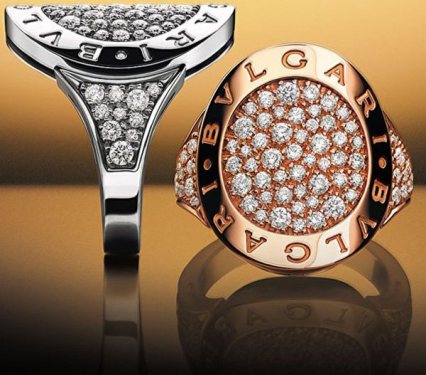 According to analysis of foreign luxury consumption patterns, luxury goods include castles, private yachts, art, jewelry watches, high-end fine wines, and high-grade clothing. When per capita GDP reaches 3,000 to 4,000 US dollars, consumer demand is mainly concentrated on jewelry, watches, and clothing. Category. China is in the initial stage of luxury consumption, and jewelry consumption has entered a period of rapid growth.
According to analysis of foreign luxury consumption patterns, luxury goods include castles, private yachts, art, jewelry watches, high-end fine wines, and high-grade clothing. When per capita GDP reaches 3,000 to 4,000 US dollars, consumer demand is mainly concentrated on jewelry, watches, and clothing. Category. China is in the initial stage of luxury consumption, and jewelry consumption has entered a period of rapid growth. China is not only a big consumer of luxury goods, but also gradually entered the consuming country of jewelry. The annual sales volume of China's jewellery industry grew rapidly for many years. After reaching 220 billion yuan in 2009, the total sales volume reached a new high in 2010, reaching 250 billion yuan, a year-on-year increase of 13.64%. According to estimates by the China Jewelry and Jewelry Management Center, China will become the world’s largest jewelry consumer market by 2020.
Let us look at these amazing numbers:
Gold: In 2010, total gold consumption was 579.5 tons, ranking second in the world, second only to India.
Platinum: Consumption has been ranked first in the world since the beginning of this century.
Diamond: It surpassed Japan for the first time in 2009, ranking second in the world, with an annual consumption of 25 billion yuan.
Pearl: China is the world's largest producer of freshwater pearls, accounting for more than 95% of world production.
Silver: About 800 tons of silver craftwork and jewelry were used in 2008.
In 2011, first-tier cities purchased high-end consumers, and the average per capita consumption of jewels reached RMB 24,065, with an average unit price of RMB 17,352. R CHC research conducted in 2012 in Beijing, Shanghai, and Guangzhou shows that current jewellery consumption accounts for about the current high-end Chinese population. With the 5% of luxury goods consumption, with the continued rapid development of the Chinese jewelry market, the jewelry consumption of Chinese high-end consumers will increase further in the future.
In 2011, among the top consumers who purchased jewellery in first-tier cities, the per capita consumption amounted to RMB 24,065. From the purchase price point of view, the average unit price purchase price is 17,352 yuan, of which the average purchase price of overseas brands is relatively high, reaching 21,654 yuan, and the average purchase price of local brands is 11,985 yuan.
On the whole, among the top-tier consumers in the first-tier cities, “decorating themselves, highlighting taste†and “rewarding themselves†are the most important buying motives for consumers when they buy jewelry.
In Beijing, jewellery purchases accounted for the highest proportion due to “engagement, marriage, or other important moments.†In Shanghai and Guangzhou, the proportion of self-uses such as decoration and rewarding themselves is high, and it is worth noting that in Guangzhou, The purchase of jewelry for the purpose of giving away relatives and friends is much higher than that of Beijing and Shanghai.
According to analysis of foreign luxury consumption patterns, luxury goods include castles, private yachts, art, jewelry watches, high-end fine wines, and high-grade clothing. When per capita GDP reaches 3,000 to 4,000 US dollars, consumer demand is mainly concentrated on jewelry, watches, and clothing. Category. China is in the initial stage of luxury consumption, and jewelry consumption has entered a period of rapid growth.
The research shows that among the jewelry brands of several major listed companies, Chow Tai Fook topped the list with 87.1% of the market's cognition rate, followed by Zhou Shengsheng with a cognition rate of 80.6%. The consumer perception of the brand presents a distinct regional feature. For example, the market recognition rate of Hong Kong-owned brands such as Liufu and Jinzhizun in Guangzhou is much higher than that in Beijing and Shanghai, and Xie Ruilin recognizes in Shanghai and Guangzhou. Knowledge rate is much higher than the Beijing market.
In terms of ownership, among the top-tier consumers in the first-tier cities, the Chow Tai Fook brand has the highest jewelry ownership rate of 44.8%, followed by Zhou Shengsheng, which reached 32.2%. The Hong Kong-owned brands such as TSL, Liu Fu, and Jin Zhizun have a high ownership rate among Guangzhou consumers.
From the perspective of high-end consumer jewellery pre-order plans in China's first-tier cities in the next six months, among several major brands, Chow Tai Fook topped the list with a pre-order rate of 11.7%, followed by Zhou Shengsheng, with a pre-order rate of 9.3%.
Because Chow Tai Fook and Zhou Shengsheng have higher awareness and ownership rate among high-end consumers in China's first-tier cities, their market recommendation rate is also in the forefront. 25.0% of consumers indicate that they recommend it to family and friends for recommending jewelry brands. Chow Tai Fook, 17.2% of consumers recommend the Chow Sang Sang brand.
Why Chinese Markets Pursue Jewelry?
According to the analysis of foreign luxury goods consumption patterns, luxury goods include castles, private yachts, artworks, jewelry watches, high-end wines, and high-grade clothing. At the same time, luxury goods consumption has a clear demand hierarchy. When per capita GDP reaches 3,000 to 4,000 US dollars, consumer demand is mainly concentrated in jewelry, watches, and clothing. As the per capita GDP further increases, consumer demand will gradually increase to art and private consumption. Yachts, castles and other categories. According to China’s macro data, China’s per capita GDP reached 3,000 US dollars in 2008 and 4,000 US dollars in 2010. China is in the initial stage of luxury consumption, and jewelry consumption has entered a period of rapid growth.
Single Mattress Protector,Mattress Protector,Mattress Cover,Waterproof Mattress Cover
Hebei Spring-Tex I/E Co.,Ltd , https://www.spring-mattresscover.com